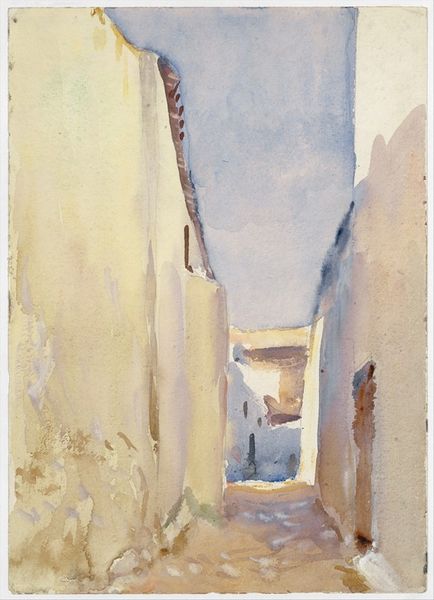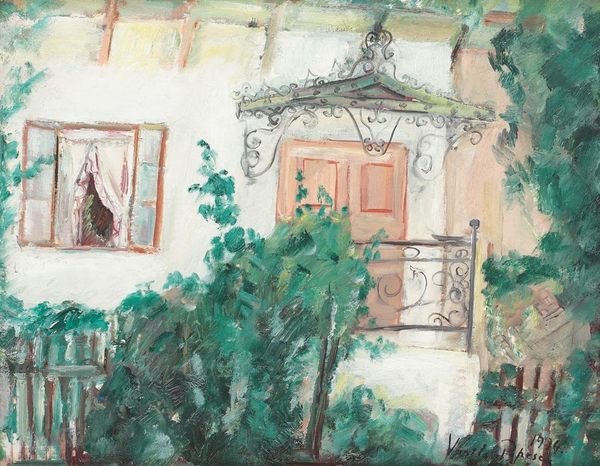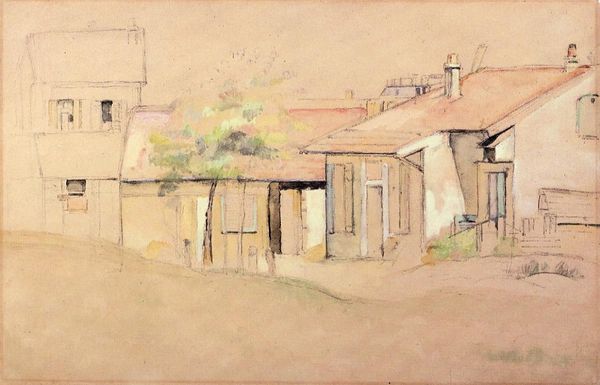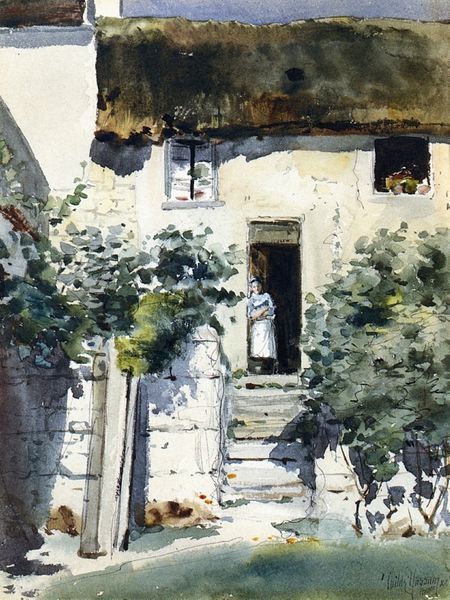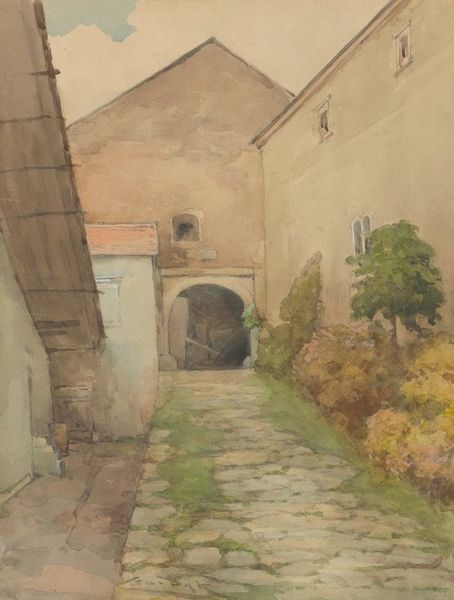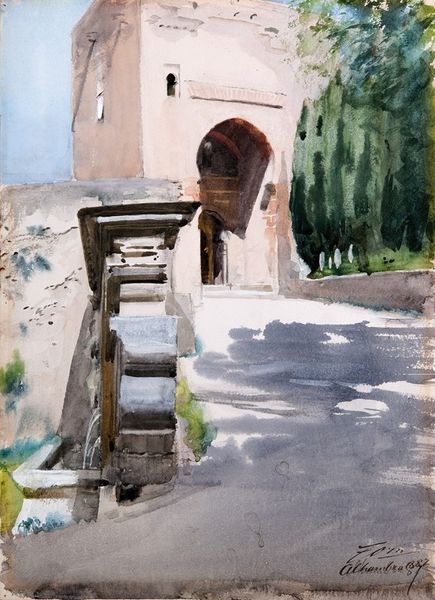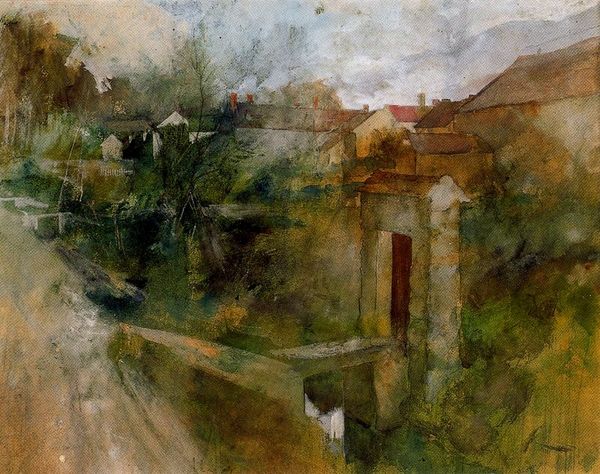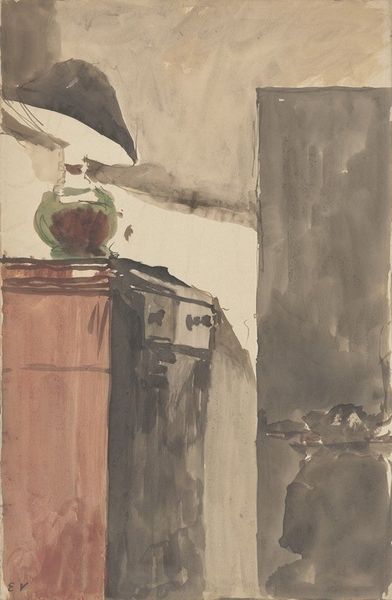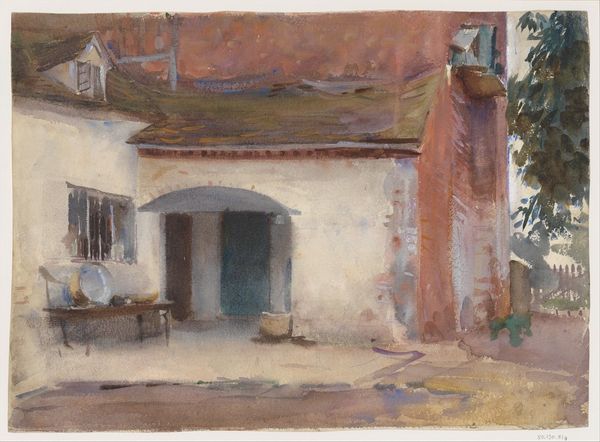
drawing, watercolor, pencil
#
drawing
#
water colours
#
impressionism
#
landscape
#
oil painting
#
watercolor
#
pencil
#
cityscape
#
watercolor
#
realism
Copyright: Public Domain: Artvee
Curator: Edwin Austin Abbey’s “Study of exterior of a red brick house” immediately feels serene, almost faded, like a memory captured in watercolor and pencil. The way the green vines creep around the door…it evokes a sense of forgotten spaces. Editor: Absolutely. The seemingly simple subject matter hints at complex social commentaries, don’t you think? It’s a building facade, presumably domestic. Consider the context: whose home is this, and how might the artist's gaze impact how we perceive that private space becoming a public artwork? Curator: I see it as more of an introspective exercise. The overgrowth could symbolize nature reclaiming what was once purely structural, or a hidden history slowly being revealed through layers of time and weathering. These motifs certainly have deep roots across diverse artistic periods and interpretations of cultural memory. Editor: Perhaps, but the visible signs of age can serve as evidence of gentrification and urban decay too, particularly since no date for its creation has been established, we may never know what he really had in mind while producing it. The use of a light palette could equally point to elision and whitewashing – metaphorically, in addition to the literally visual impression – of socioeconomic stratification embedded in architectural spaces. The vine covering part of the door acts not just as visual interest, but as a blockade between "insider" and "outsider" status for marginalized communities in such scenarios. Curator: I can see how you read it through that sociopolitical lens, definitely a worthwhile consideration. For me, it goes further back, maybe pre-industrialisation when materials had an immediate organic feel, as evident in the subtle shifts of hue in the brickwork; this speaks of something much larger which transcends any particular political context or era entirely. What do you take from its seeming incompleteness – large areas left unpainted, initial outlines visible, details merely suggested instead of fully rendered? Editor: The perceived incompleteness actually underscores the inherent inequalities often made invisible by completed projects. Leaving it exposed disrupts comfortable narratives of seamless progress and ownership, it is an assertive political declaration that urges accountability in considering who benefits or bears disproportionate brunt. Curator: Regardless of the artist's original intent – if there ever was one single aim to it – it certainly manages to invite a dialogue! This building speaks of both resilience and impermanence simultaneously. Editor: It indeed does, making us re-evaluate the layers concealed within even ordinary-seeming sights from a specific sociohistorical and material perspective.
Comments
No comments
Be the first to comment and join the conversation on the ultimate creative platform.
